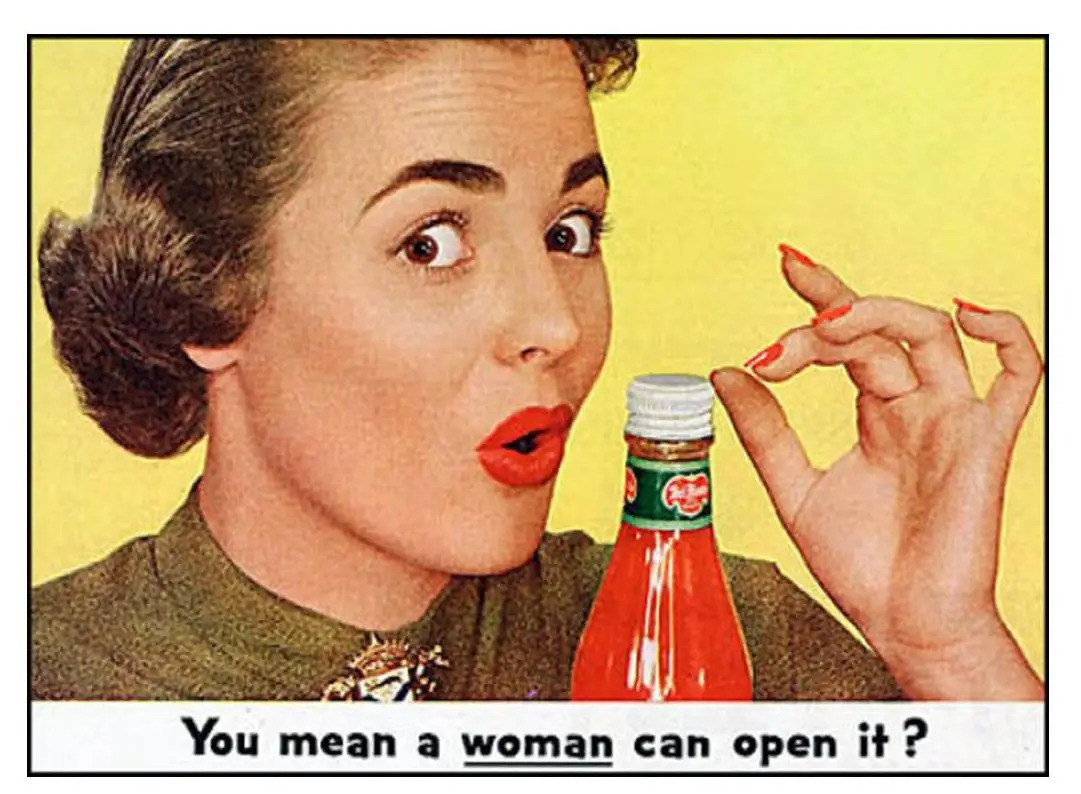
Sexist ads have been around for decades, shaping perceptions and reinforcing stereotypes. These advertisements often portray women and men in limiting roles, affecting how society views gender. Why do sexist ads persist? They continue because they tap into deep-seated cultural norms and biases. Companies use these ads to grab attention, even if it means perpetuating harmful stereotypes. What impact do they have? They can damage self-esteem, influence career choices, and perpetuate inequality. Understanding the history and effects of sexist ads helps us recognize and challenge these harmful messages. Let's dive into 35 eye-opening facts about sexist ads that will make you think twice about the media you consume.
Key Takeaways:
- Sexist ads have been around for decades, shaping societal norms and impacting self-esteem, career choices, and relationships. They perpetuate harmful stereotypes and limit opportunities for both men and women.
- Social media has empowered consumers to call out and hold brands accountable for sexist ads. Efforts to combat sexism in advertising include advertising standards, hashtag campaigns, and initiatives promoting gender equality.
The History of Sexist Ads
Sexist ads have been around for decades, reflecting and reinforcing gender stereotypes. These ads often portray women and men in limiting and harmful ways.
- Early 20th Century: Ads from the early 1900s often depicted women as homemakers, emphasizing their roles in cooking, cleaning, and child-rearing.
- 1950s and 1960s: This era saw a surge in ads that reinforced traditional gender roles, with women shown as subservient to men.
- 1970s: Despite the rise of the feminist movement, many ads continued to portray women in stereotypical roles.
- 1980s: The "superwoman" stereotype emerged, showing women as capable of balancing work and home life effortlessly.
- 1990s: Ads began to show more diversity but still often relied on traditional gender roles.
Common Themes in Sexist Ads
Sexist ads often share common themes that perpetuate harmful stereotypes. These themes can be subtle or overt but always reinforce outdated notions of gender.
- Objectification: Women are frequently depicted as objects of desire, reducing their worth to their physical appearance.
- Domesticity: Many ads show women as primarily responsible for household chores and childcare.
- Dependency: Women are often portrayed as dependent on men for financial and emotional support.
- Incompetence: Some ads depict women as incapable of performing tasks without male assistance.
- Hypermasculinity: Men are often shown as aggressive, dominant, and emotionally detached.
Impact on Society
Sexist ads don't just reflect societal norms; they also shape them. These ads can have far-reaching effects on how people view themselves and others.
- Self-Esteem: Constant exposure to idealized images can negatively impact self-esteem, particularly among young women.
- Career Choices: Reinforcing gender roles can limit career aspirations, discouraging women from pursuing certain fields.
- Relationships: Stereotypical portrayals can affect how people view relationships, promoting unhealthy dynamics.
- Consumer Behavior: Ads influence purchasing decisions, often encouraging consumers to buy products that reinforce gender norms.
- Cultural Norms: Over time, these ads can shape cultural norms, making sexist attitudes seem acceptable.
Examples of Infamous Sexist Ads
Some ads have become infamous for their blatant sexism, sparking outrage and debate. These examples highlight the worst offenders.
- 1950s Van Heusen Ad: This ad showed a woman serving breakfast in bed to her husband with the tagline, "Show her it’s a man’s world."
- 1960s Folgers Coffee Ad: A series of ads implied that a woman's worth was tied to her ability to make good coffee for her husband.
- 1970s Tipalet Cigarette Ad: This ad suggested that blowing smoke in a woman's face would make her instantly attracted to the man.
- 1980s Mr. Leggs Slacks Ad: Featured a man with his foot on a woman's head, implying dominance and control.
- 1990s Calvin Klein Ad: Criticized for its hypersexualized portrayal of young models, blurring the line between fashion and exploitation.
Modern-Day Sexist Ads
Despite progress, sexist ads still exist today. These modern examples show that the fight against sexism in advertising is far from over.
- 2010s Protein World Ad: Featured a slim woman in a bikini with the tagline, "Are you beach body ready?" sparking backlash for body shaming.
- 2010s Carl's Jr. Ads: Known for using scantily clad women to sell burgers, reinforcing the idea that sex sells.
- 2010s Dolce & Gabbana Ad: Depicted a woman in a submissive position surrounded by men, criticized for promoting violence against women.
- 2010s Bloomingdale's Ad: Suggested "spiking" a friend's drink, trivializing consent and promoting dangerous behavior.
- 2020s Peloton Ad: Featured a woman receiving an exercise bike from her husband, criticized for implying that she needed to lose weight.
The Role of Social Media
Social media has changed the landscape of advertising, making it easier for consumers to call out sexist ads. This has led to increased accountability for brands.
- Viral Outrage: Social media platforms allow users to quickly share and criticize sexist ads, leading to viral outrage.
- Hashtag Campaigns: Campaigns like #NotBuyingIt encourage consumers to boycott brands that use sexist advertising.
- Brand Responses: Many brands have been forced to issue apologies and pull ads due to social media backlash.
- Consumer Empowerment: Social media gives consumers a voice, empowering them to demand more responsible advertising.
- Influencer Impact: Influencers can use their platforms to call out sexism in advertising, reaching large audiences.
Efforts to Combat Sexist Ads
Various organizations and movements are working to combat sexism in advertising, promoting more inclusive and respectful portrayals.
- Advertising Standards: Many countries have advertising standards that prohibit sexist content.
- #SeeHer Campaign: Launched by the Association of National Advertisers to improve the portrayal of women in media.
- Unstereotype Alliance: An initiative by UN Women to eliminate harmful gender stereotypes in advertising.
- Dove's Real Beauty Campaign: Celebrated diverse body types and challenged traditional beauty standards.
- Gender Equality Certifications: Some organizations offer certifications for brands that commit to gender equality in their advertising.
Reflecting on Sexist Ads
Sexist ads have left a significant mark on society. They’ve shaped perceptions, reinforced stereotypes, and influenced gender roles. These ads often portray women and men in limiting ways, impacting how people view themselves and others. Recognizing these patterns helps us understand the power of media and advertising in shaping societal norms.
By being aware of these issues, we can push for more inclusive and respectful representations in advertising. It’s crucial to challenge and question the messages we see daily. This awareness can lead to positive change, promoting equality and respect for all genders.
Sexist ads might be a part of history, but they don’t have to define our future. Let’s strive for a world where ads reflect diversity and equality, breaking free from outdated stereotypes. Together, we can create a more inclusive media landscape.
Frequently Asked Questions
Was this page helpful?
Our commitment to delivering trustworthy and engaging content is at the heart of what we do. Each fact on our site is contributed by real users like you, bringing a wealth of diverse insights and information. To ensure the highest standards of accuracy and reliability, our dedicated editors meticulously review each submission. This process guarantees that the facts we share are not only fascinating but also credible. Trust in our commitment to quality and authenticity as you explore and learn with us.


